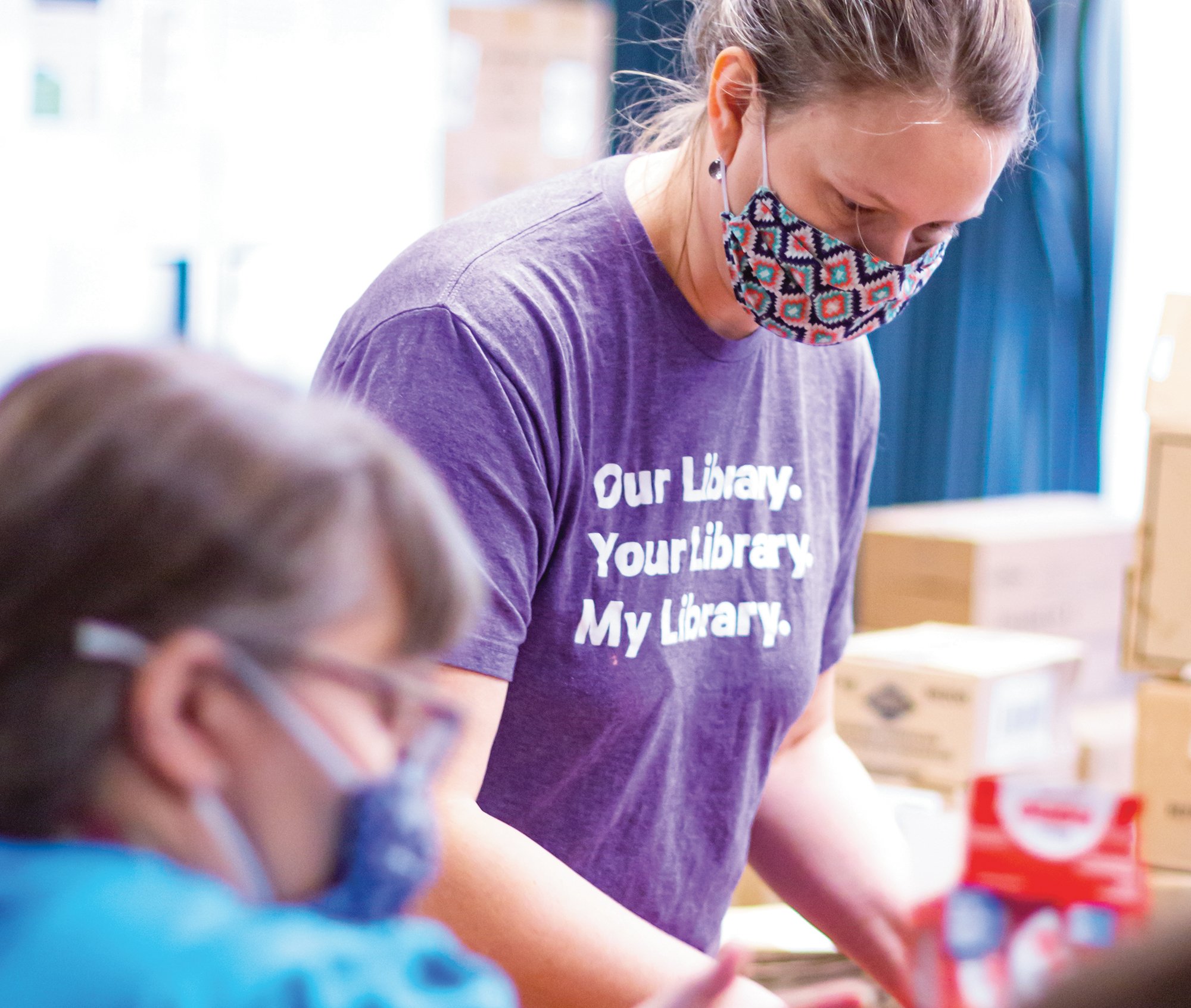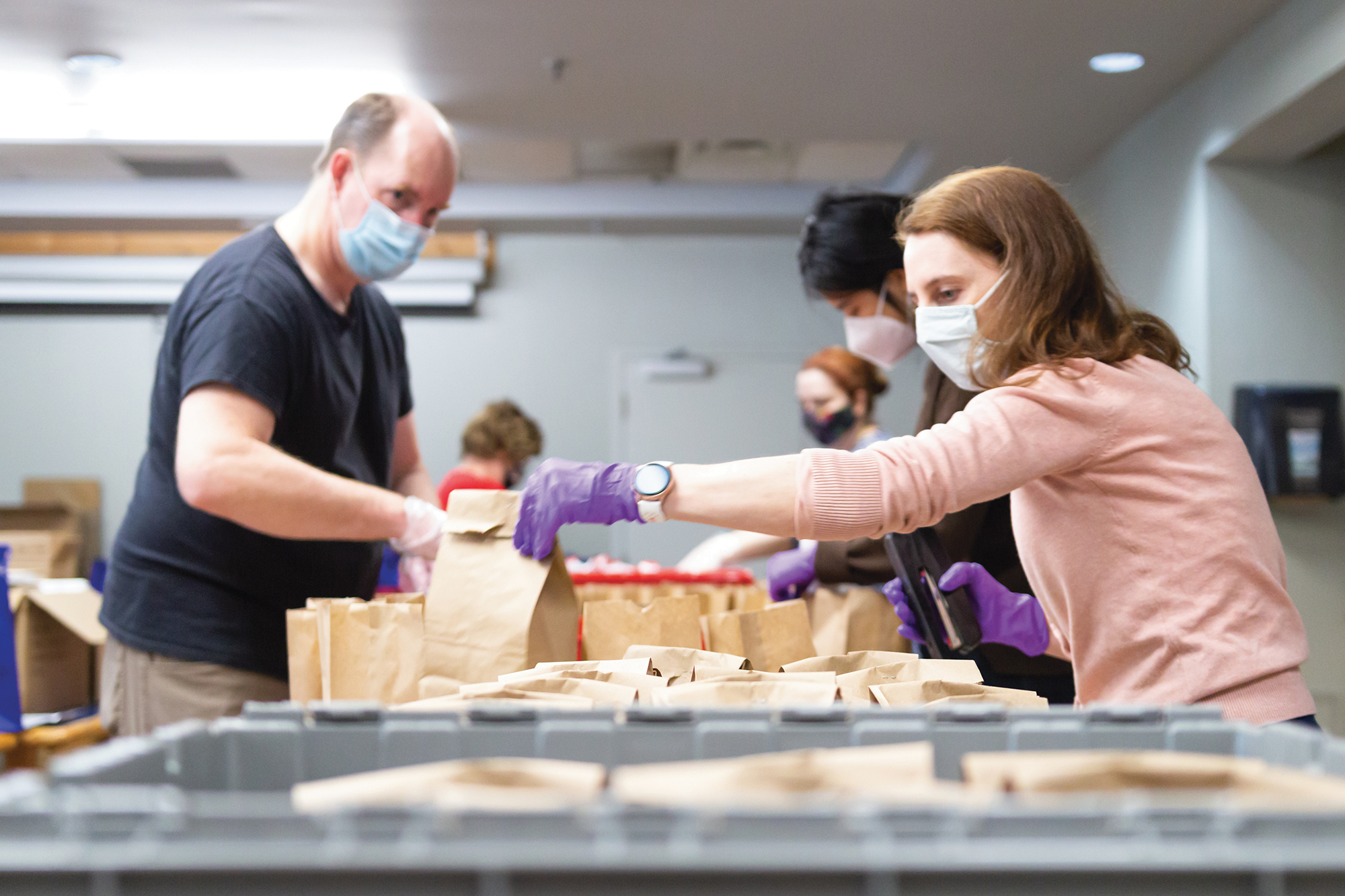Before the COVID-19 pandemic shuttered libraries across the country in March 2020, the Calgary Public Library was working toward launching a new program: a community wellness desk that would offer free support for mental health and addiction issues at its central branch. But after libraries closed as part of the lockdown and the impact of pandemic restrictions on mental health became known, the library decided to move ahead more quickly than planned, says interim CEO Sarah Meilleur.
“The needs became so high during the pandemic that we realized this was a service we needed to prioritize,” Meilleur says. The pilot program, offered in partnership with local non-profit Wood’s Homes, ran from October to December. It was successful, and the Calgary Public Library is looking into expanding wellness counselling to more branches.
“Libraries are very welcoming and safe places,” she says. “Having an opportunity to connect with mental-health support within a library setting can really help reduce the stigma someone might feel.”
Over the course of the pandemic, public libraries across the country have moved into uncharted territory to support their communities, launching programs and partnerships that may have seemed unlikely before COVID. In Toronto, the public library supported the city’s food banks in the early days of the first lockdown. TPL staff volunteered to sort food into hampers, and the library’s distribution and delivery hub shifted from books to food hampers. Food banks continue to operate out of the parking lots of two branches, says city librarian Vickery Bowles, and the TPL is looking at extending some of these partnerships to develop community gardens at branches with adequate green space.
“It’s been transformational in terms of the way [libraries] are viewed by external stakeholders,” Bowles says. “What we’ve been able to do throughout the pandemic is to strengthen our position as a community resource that is progressive and innovative and on the leading edge of new initiatives.”
That position was recognized by the city’s public health department in March. Last year, TPL was one of several libraries across the country to make wellness calls to seniors, checking in to see how they were coping with the social isolation of lockdown. This spring, library staff added a public-health component to their calls: as COVID-19 vaccinations were rolled out by age, library staff called customers eligible for the shot to alert them and answer any questions they might have about how to book an appointment.
Hamilton Public Library has seconded 65 of its employees to the city’s public health department to support its vaccination program. Library staff are helping with data entry, a vaccine information hotline, and booking appointments. Forty-seven are working on site at clinics performing tasks that don’t require a healthcare practitioner, says director of collections and program development Lisa Radha Weaver.
The prominence of the Halifax Public Libraries – its central branch routinely makes tourism must-visit lists – led Nova Scotia Health Authority to use it as a COVID-19 rapid-testing site late last year. The library also worked to quickly modify its in-person programs, such as its free snack program, to be COVID-safe. Library staff packaged food into individual snack packs to distribute to patrons. “There’s so much about being that trusted public space that really invites us as communities to say, How do we leverage that?” says chief librarian and CEO Åsa Kachan. “The more willing we are to change and morph into whatever our communities need us to be, that’s key to having the impact that we want to have on the community.”
The pandemic also focused attention on issues of equity. Many libraries quickly pivoted last spring to providing free Wi-Fi hotspots and lending devices to people who didn’t have reliable internet access at home, and many more have adopted fine-free loans to prevent barriers to access. There was already a movement for libraries to go fine-free, and the pandemic has accelerated it, says Todd Kyle, chair of the Canadian Federation of Library Associations and CEO of the Brampton Library.
Public libraries have always worked to support the needs of their communities, and the nature of the pandemic has highlighted the importance of libraries today and into the future. “The library is a community hub that will adjust to serve the changing needs of its community,” Bowles says. “We serve customers in branches, we serve customers online, but increasingly we also serve customers out in the community.”


 Contact us via email
Contact us via email
